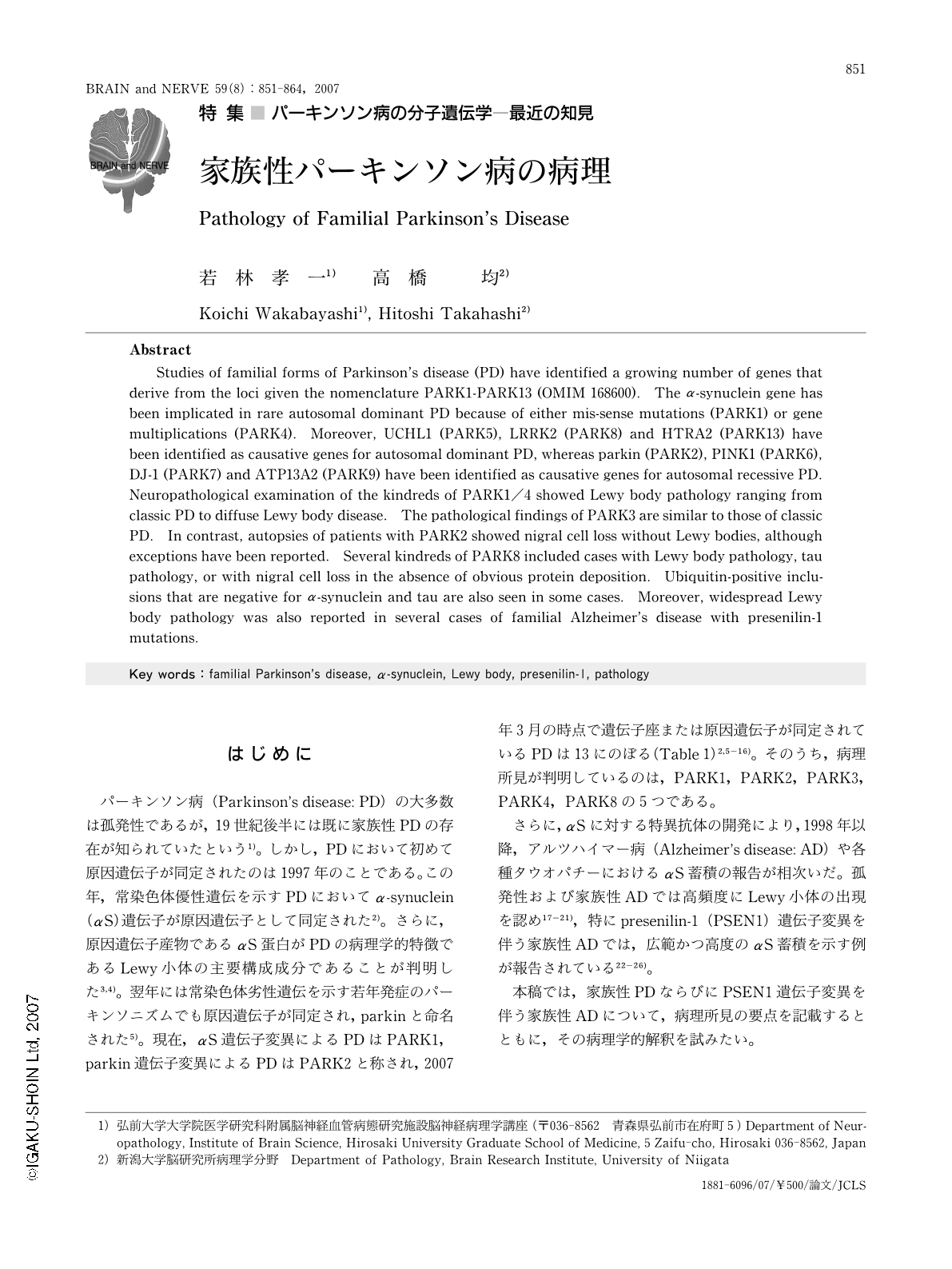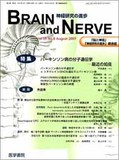Japanese
English
- 有料閲覧
- Abstract 文献概要
- 1ページ目 Look Inside
- 参考文献 Reference
はじめに
パーキンソン病(Parkinson's disease: PD)の大多数は孤発性であるが,19世紀後半には既に家族性PDの存在が知られていたという1)。しかし,PDにおいて初めて原因遺伝子が同定されたのは1997年のことである。この年,常染色体優性遺伝を示すPDにおいてα-synuclein(αS)遺伝子が原因遺伝子として同定された2)。さらに,原因遺伝子産物であるαS蛋白がPDの病理学的特徴であるLewy小体の主要構成成分であることが判明した3,4)。翌年には常染色体劣性遺伝を示す若年発症のパーキンソニズムでも原因遺伝子が同定され,parkinと命名された5)。現在,αS遺伝子変異によるPDはPARK1,parkin遺伝子変異によるPDはPARK2と称され,2007年3月の時点で遺伝子座または原因遺伝子が同定されているPDは13にのぼる(Table1)2,5-16)。そのうち,病理所見が判明しているのは,PARK1,PARK2,PARK3,PARK4,PARK8の5つである。
さらに,αSに対する特異抗体の開発により,1998年以降,アルツハイマー病(Alzheimer's disease: AD)や各種タウオパチーにおけるαS蓄積の報告が相次いだ。孤発性および家族性ADでは高頻度にLewy小体の出現を認め17-21),特にpresenilin-1(PSEN1)遺伝子変異を伴う家族性ADでは,広範かつ高度のαS蓄積を示す例が報告されている22-26)。
本稿では,家族性PDならびにPSEN1遺伝子変異を伴う家族性ADについて,病理所見の要点を記載するとともに,その病理学的解釈を試みたい。
Abstract
Studies of familial forms of Parkinson's disease (PD) have identified a growing number of genes that derive from the loci given the nomenclature PARK1-PARK13 (OMIM 168600). The α-synuclein gene has been implicated in rare autosomal dominant PD because of either mis-sense mutations (PARK1) or gene multiplications (PARK4). Moreover,UCHL1 (PARK5),LRRK2 (PARK8) and HTRA2 (PARK13) have been identified as causative genes for autosomal dominant PD,whereas parkin (PARK2),PINK1 (PARK6),DJ-1 (PARK7) and ATP13A2 (PARK9) have been identified as causative genes for autosomal recessive PD. Neuropathological examination of the kindreds of PARK1/4 showed Lewy body pathology ranging from classic PD to diffuse Lewy body disease. The pathological findings of PARK3 are similar to those of classic PD. In contrast,autopsies of patients with PARK2 showed nigral cell loss without Lewy bodies,although exceptions have been reported. Several kindreds of PARK8 included cases with Lewy body pathology,tau pathology,or with nigral cell loss in the absence of obvious protein deposition. Ubiquitin-positive inclusions that are negative for α-synuclein and tau are also seen in some cases. Moreover,widespread Lewy body pathology was also reported in several cases of familial Alzheimer's disease with presenilin-1 mutations.

Copyright © 2007, Igaku-Shoin Ltd. All rights reserved.


